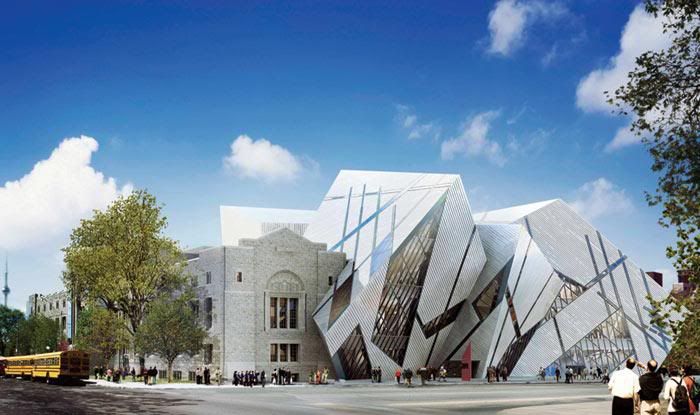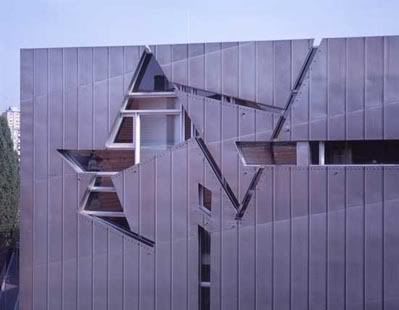
The Crystal addition
[All images can be clicked to view larger ones]
Architects these days are spending an inordinate amount of energy building delicate glass structures. And Daniel Libeskind, chosen for the ROM project, already had a dubious attempt at designing one.
He somehow got unofficially elected to build the “Freedom Tower” where the World Trade Center once stood. But his design later appeared so unstable that a second architect - David Childs - was put in charge to solidify it.


Original Freedom Tower design..............New Freedom Tower design
The Crystal at the ROM will have no such problems. Libeskind opted for sturdy rather than delicate. I would have called it “The Tank”, like Libeskind’s Jewish Museum in Berlin. Libeskind is cultivating some kind of tradition, after all. But unlike the Freedom Tower whose faulty structure only architects could see, we the public will forever wonder if these discombobulated cubes will cave in on us.
I’m astonished that the Berliner Jews allowed their sacred, Biblical sign to be so irreverently disfigured. Libeskind’s various slits for windows are parts and pieces of the lines that make the disjointed Star of David.

Libeskind's Jewish Museum in Berlin
There is no concern for the sacred when designing the ROM extension. But should there be? I don’t know what it is with architects in Toronto. Diamond (of the Toronto Opera House fame) complained about lack of funds, when it is more likely a lack of talent. What is Libeskind’s excuse? I must conclude that at the heart of it is a propensity for selling himself, covering up the real problem which is once again a scarcity of artistic ability. Testament to this is his Freedom Tower debacle.
And it’s not only Toronto that is short-changed. One of the finalists for the New York project came up with a spiralling set of glass towers. The simple symbolics of two towers (joined in the middle) spiralling upwards, with light emitting into the dark heavens above (carrying the souls of the departed?), would have surely garnered the appreciation and thanks of New Yorkers and visitors.

Design by finalists Frederic Schwartz and Rafael Vinoly
from THINK Designs
The THINK blueprint was the original recommendation by the Lower Manhattan Development Corporation. Instead, Libeskind’s salesmanship won the show. And he offered New York a faulty tower that's unable to carry the ghosts of the departed to their rightful place.
Once again, his ulterior motive becomes apparent. Salesmanship is easier than spirituality.